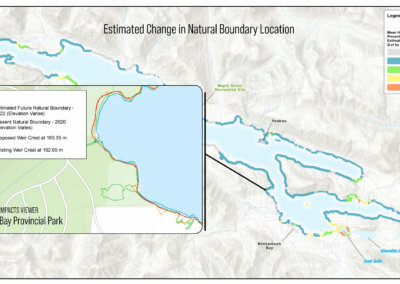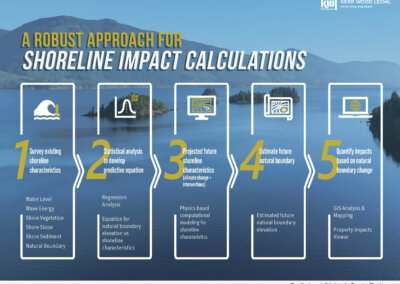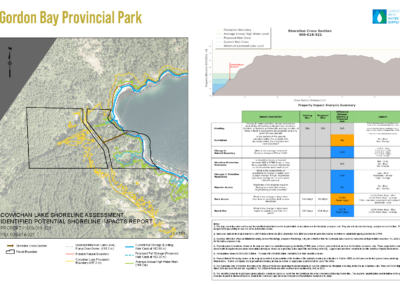About the Project
Climate change-induced drought is drying up BC rivers, putting community water supplies at risk, endangering salmon populations, and damaging ecosystems that are culturally significant for First Nations and the broader community. Constructing or upgrading low dams or weirs at lake outlets allows more water to be stored during wetter seasons, providing a source of extra flow, and thereby a cost-effective way to improve drought resiliency that could be easily implemented in many watersheds.
However, regulating lake levels can have negative impacts to shorelines, which need to be considered during project planning and permitting. This is especially important for projects involving lakeshore property owners or sensitive riparian ecosystems.
Assessing shoreline erosion from significant changes in lake levels associated with large dams is well understood. However, estimating shoreline impacts for modest, and more nuanced, changes in lake levels within the natural range, has never been done before. At the same time, it is inappropriate to suggest that there would be no impacts. This leaves a significant gap, and a barrier to project implementation and to climate action.
To overcome this knowledge gap, KWL has developed a data-driven approach, the Shoreline Impacts Calculator for Changing Climates (SICCC). This tool estimates the change to the natural boundary (the line dividing the land from the lake) in response to modulations in the annual water level regime both from changes in storage, and also changes in climate. The value of this approach was recently demonstrated in the Cowichan Lake Shoreline Assessment Project completed for the Cowichan Valley Regional District with funding from the BC Salmon Restoration and Innovation Fund.
Approach
A lake’s natural boundary is legally significant, defining property rights, and generally recognizable, through vegetation growth, making it an ideal metric for assessing shoreline change. Since it is spatially variable and observationally-founded, it is typically established in the field rather than calculated. This poses a challenge for establishing a future natural boundary, which cannot be ‘observed’.
KWL’s SICCC approach for evaluating natural boundary change embraces the observational nature of the metric by pairing extensive field observations with advanced statistics and computational modelling.
The process has the following steps:
- At each shoreline segment, collect high quality physical data (water levels, wave energy, sediment size, beach slope, vegetation) and establish the existing natural boundary.
- Use these data to develop a statistically-based equation that predicts the natural boundary for any given shore segment based on its physical characteristics.
- Use computational models to project changes in physical characteristics around the lake for scenarios of regulation and future climate change.
- For each shoreline segment, use the projected characteristics and the predictive equation to estimate future natural boundary change.
- Use the change in the natural boundary elevation to quantify shoreline impacts.
Results
The SICCC approach for estimating shoreline change supports challenging discussions of trade-offs related to changing water levels, and thus empowers decisions on climate related problems. SICCC was successfully applied to evaluate the impacts of raising the Cowichan Lake Weir. Results for each lakefront property were delivered through a GIS web-tool. Enabling each stakeholder to visualize the detailed shoreline changes, SICCC has removed a significant barrier to climate action for the community.
Service(s) Provided
Hydrotechnical Engineering
Coastal Engineering
Project Management
Project Team (Consultants)
Bazett Land Surveying Inc.
Go back to projects in
View other projects from
Stay in touch with us
Subscribe to our mailing list!
Organization
Connect
